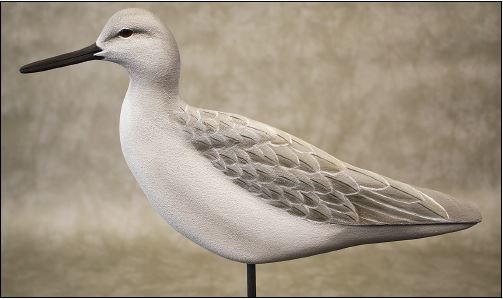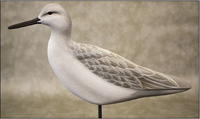The Value of Value
When you're painting, color isn't the only thing that matters.

I painted the feather shafts with mix number 1. Then, I dry brushed the lower halves of each feather with a slightly darker value than the base hue. The upper halves get a slightly lighter value.
There are many aspects to wildfowl carving, including sculpting and painting. All require specific knowledge and skills. In my quest to improve my artwork, I will frequently isolate a single parameter and try to improve it. In this article, I'll discuss my efforts to improve painting skills by working with one parameter: value. When discussing color theory, we talk in terms of hue, value, and intensity. Most references use a gray scale or neutral value scale to explain value. White is the highest value (10) and black is the lowest (0). With our artwork, objects that are in a direct light source will have a higher value than those that are not. Things that are closer to our eye have a higher value, and those further away have a lower value. In this article, I'll attempt to give dimension and life to a painting using only these principles.
This article is from the Winter 2012 issue. For more information on our issues, check out our issues page.
Read NextBeginner's Notebook: My Crow Rig



